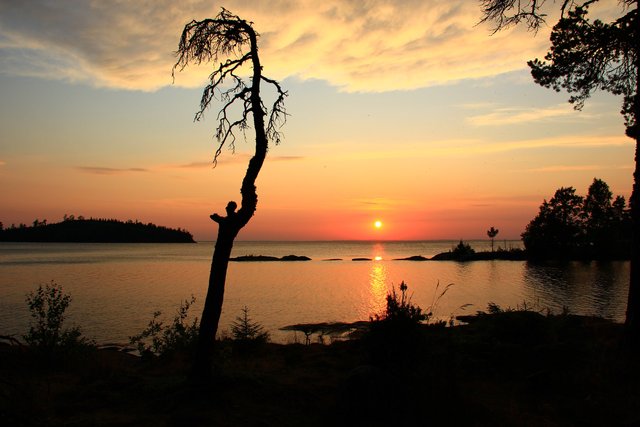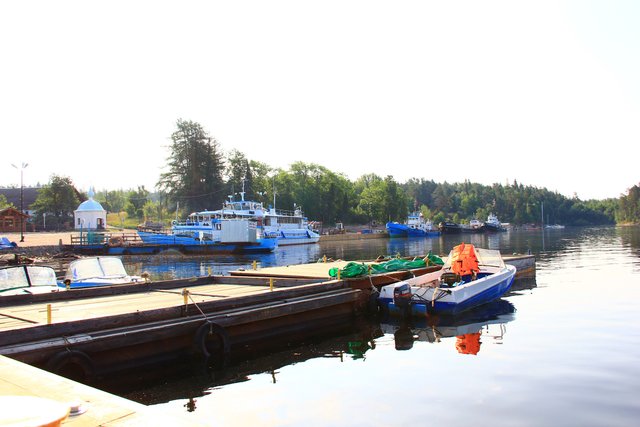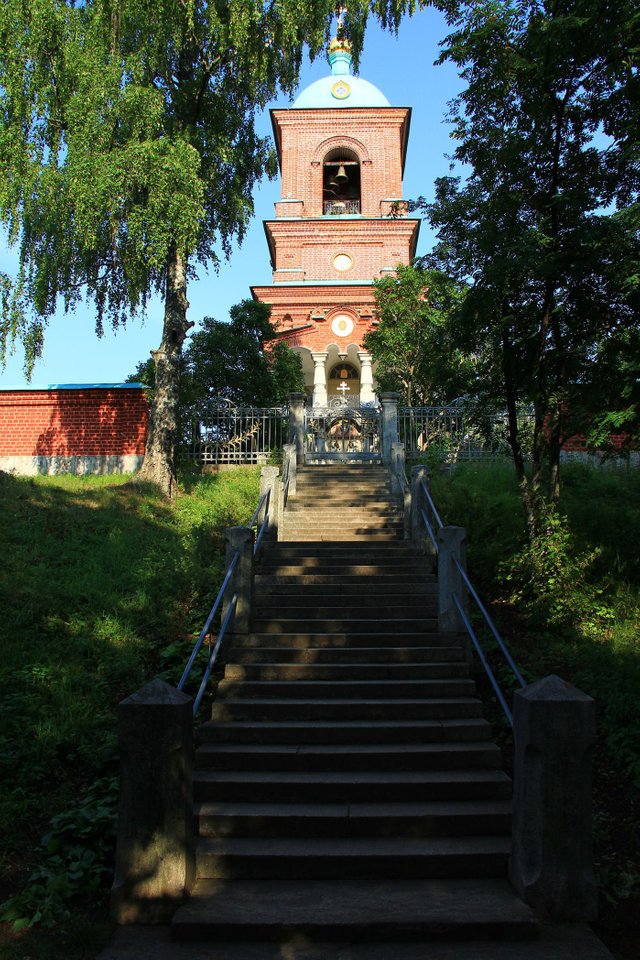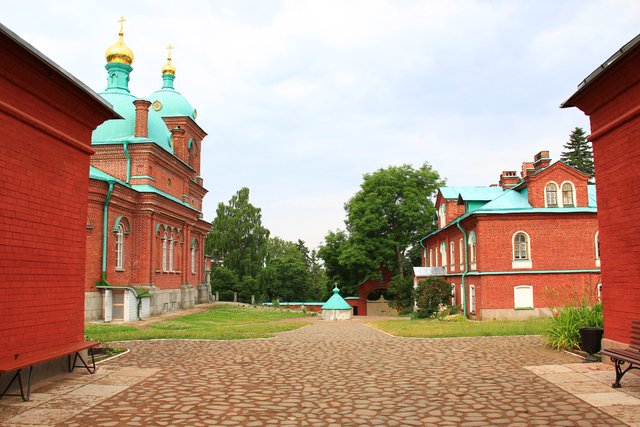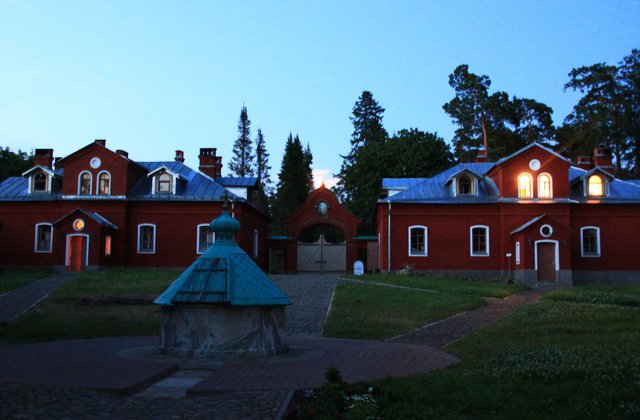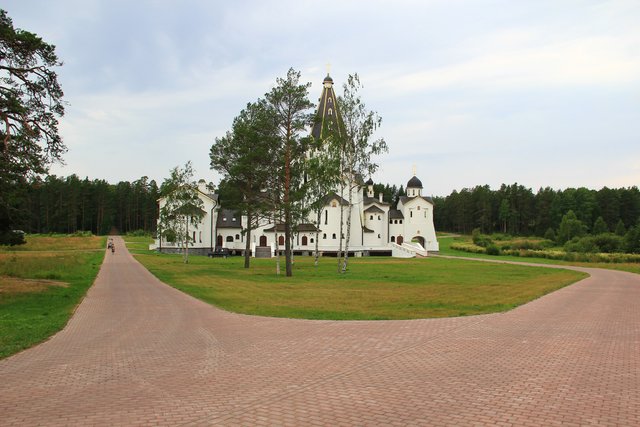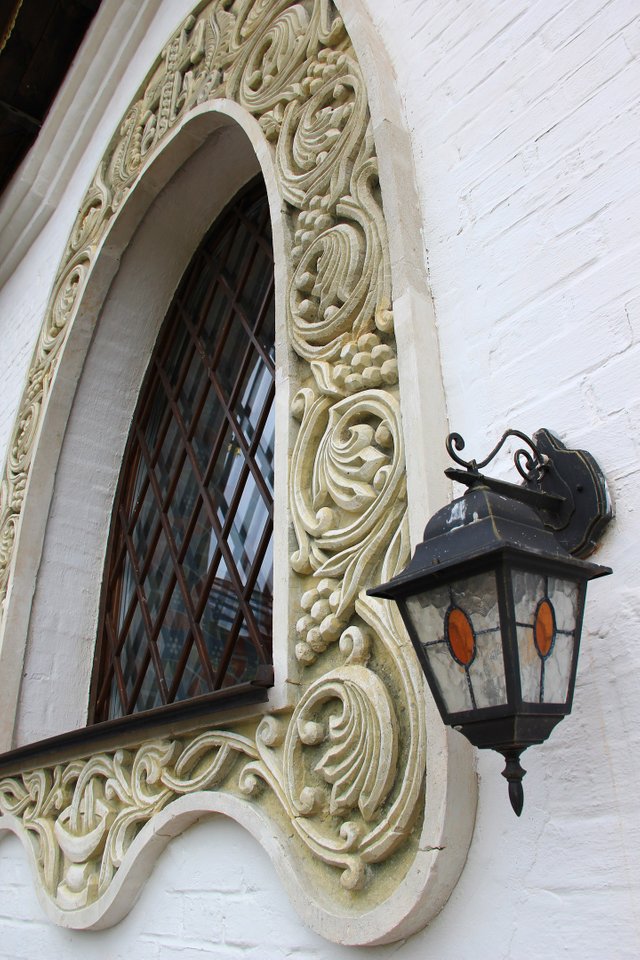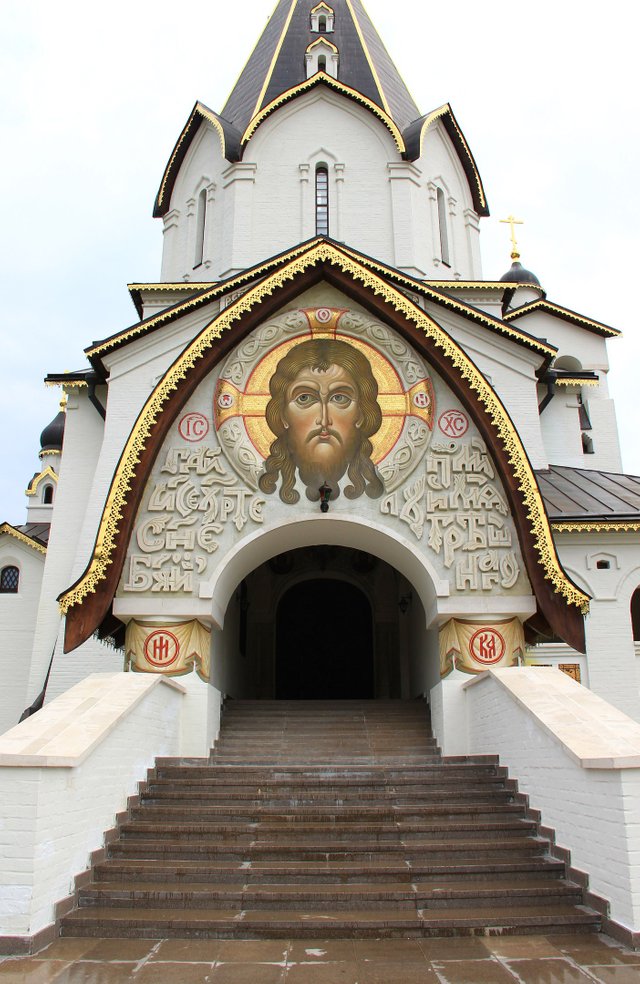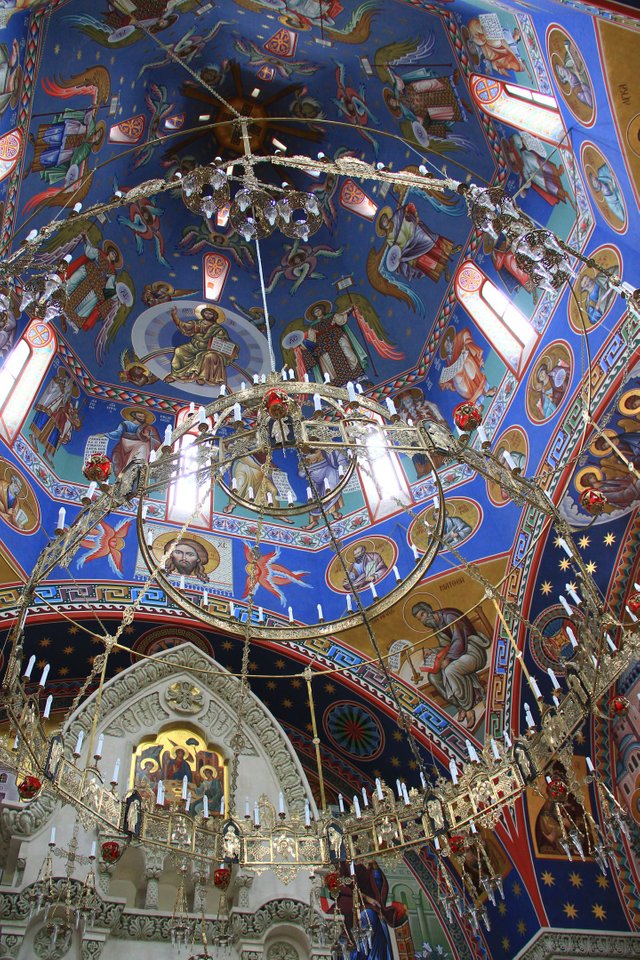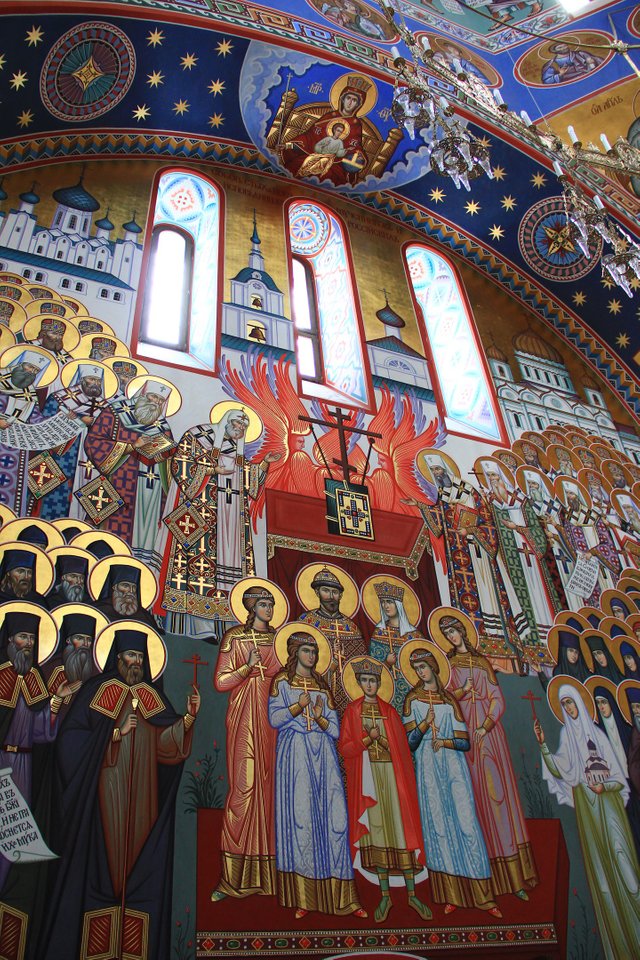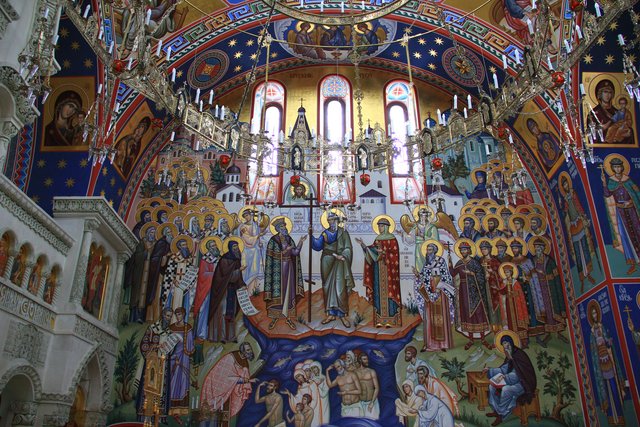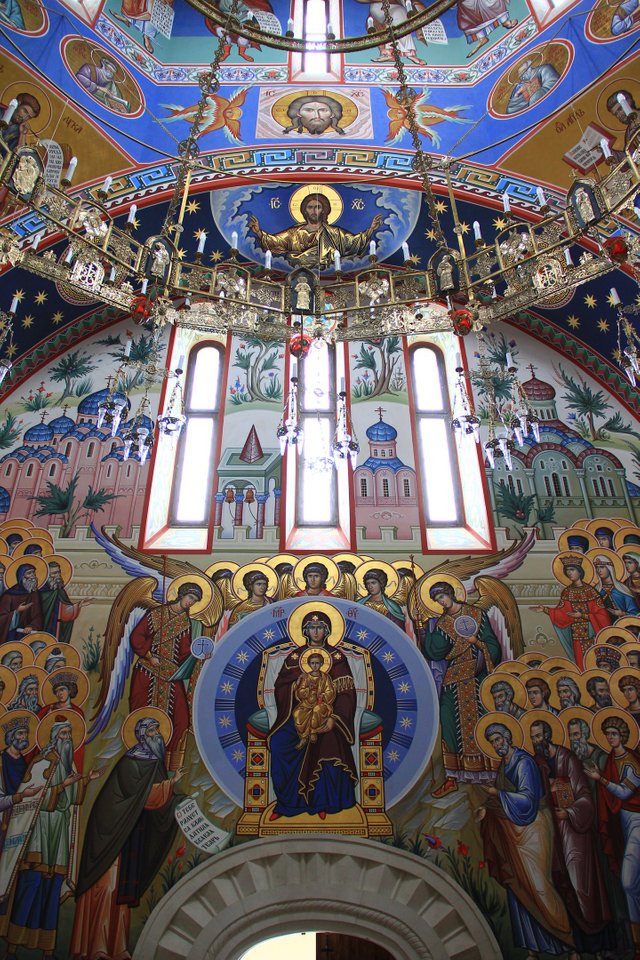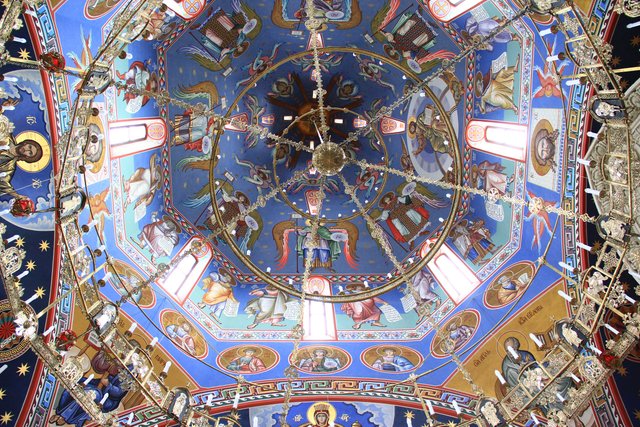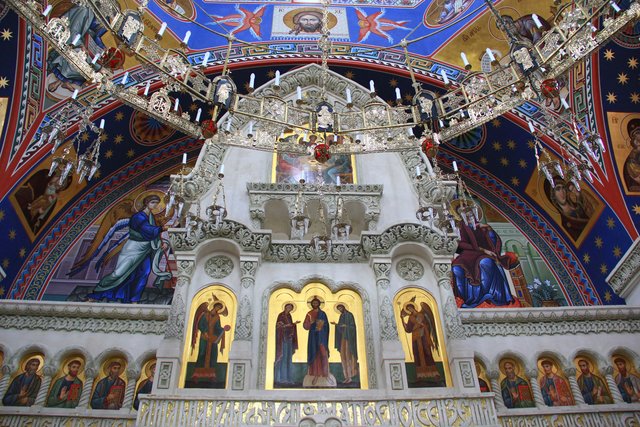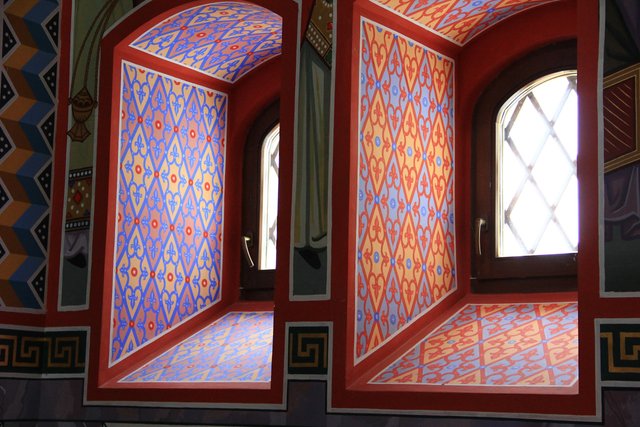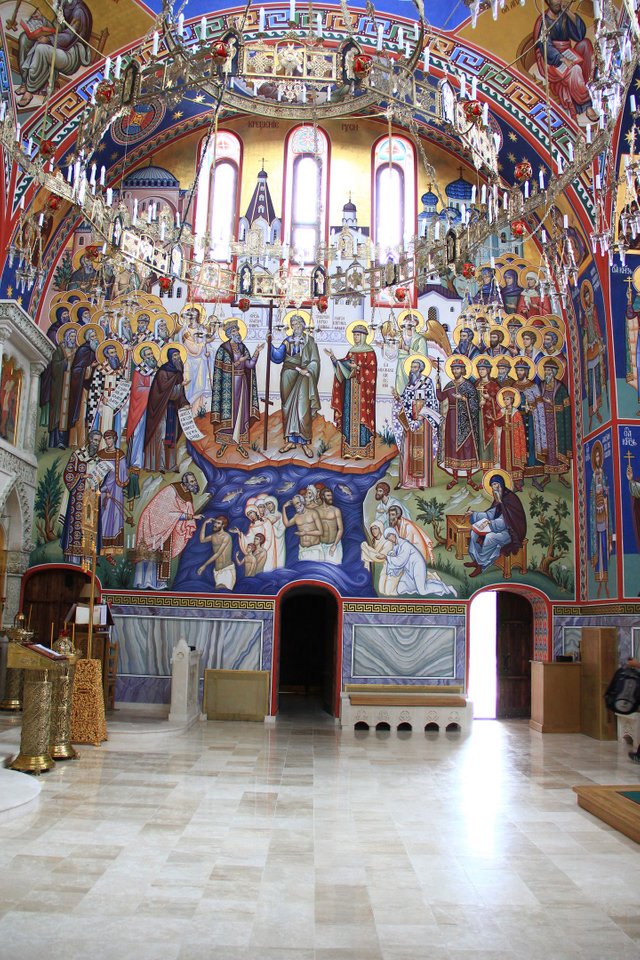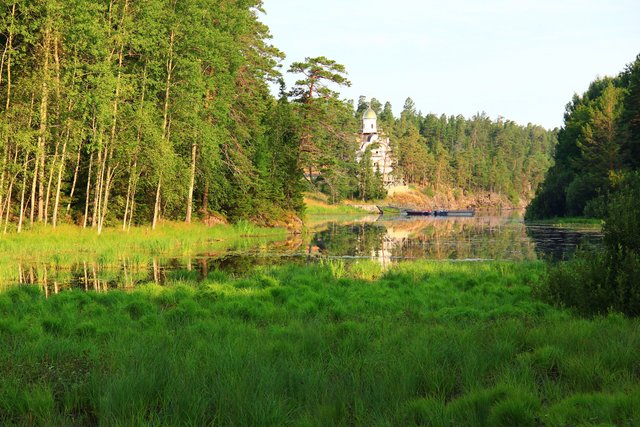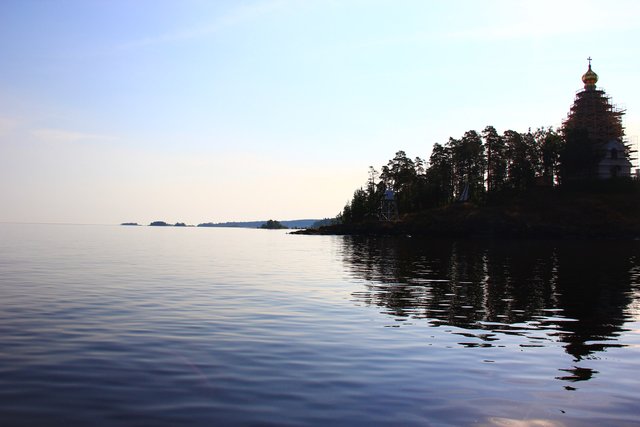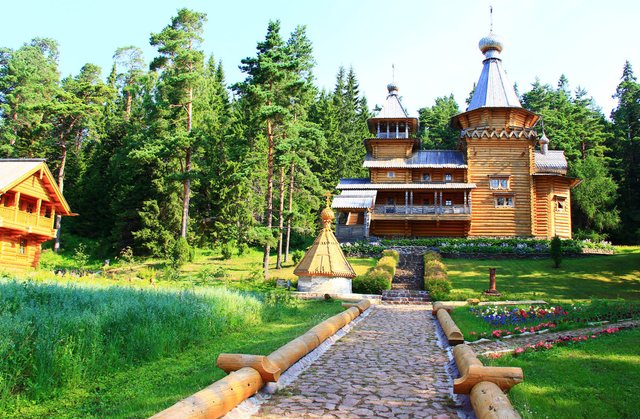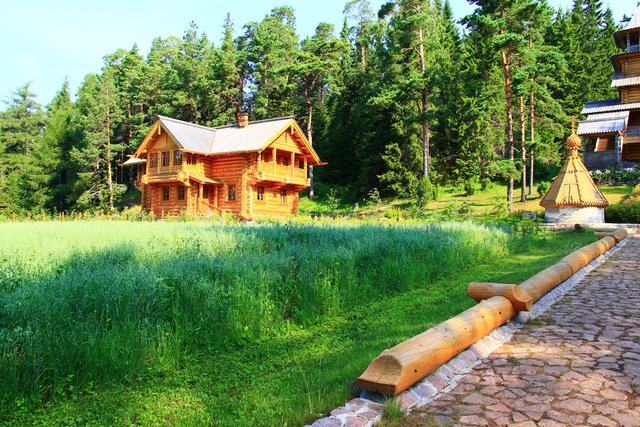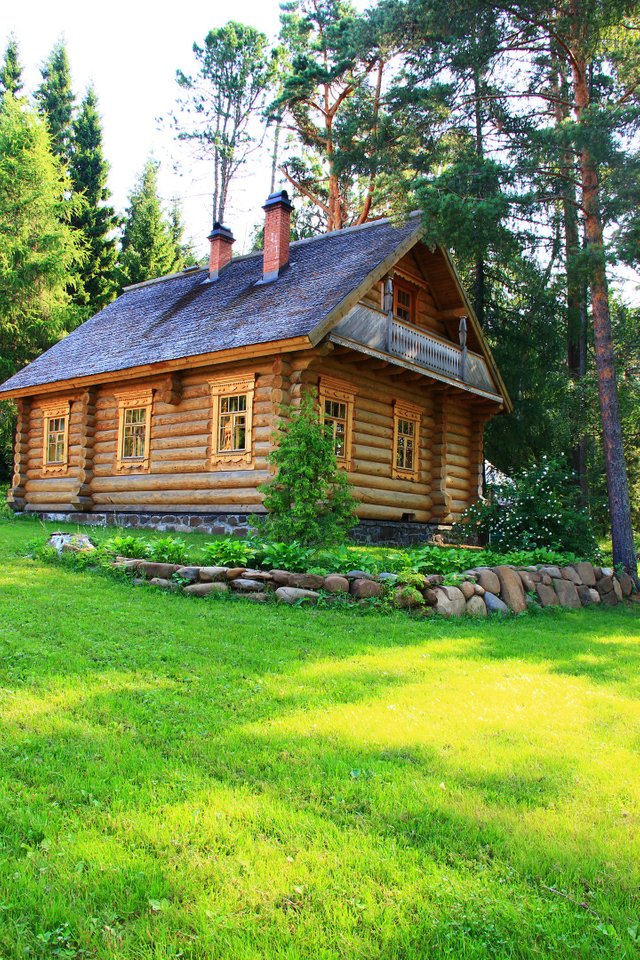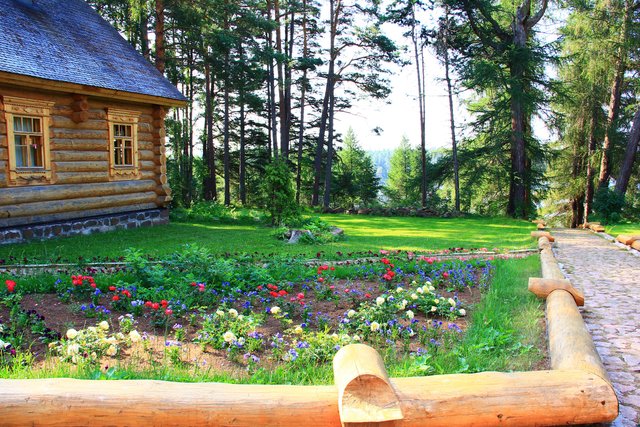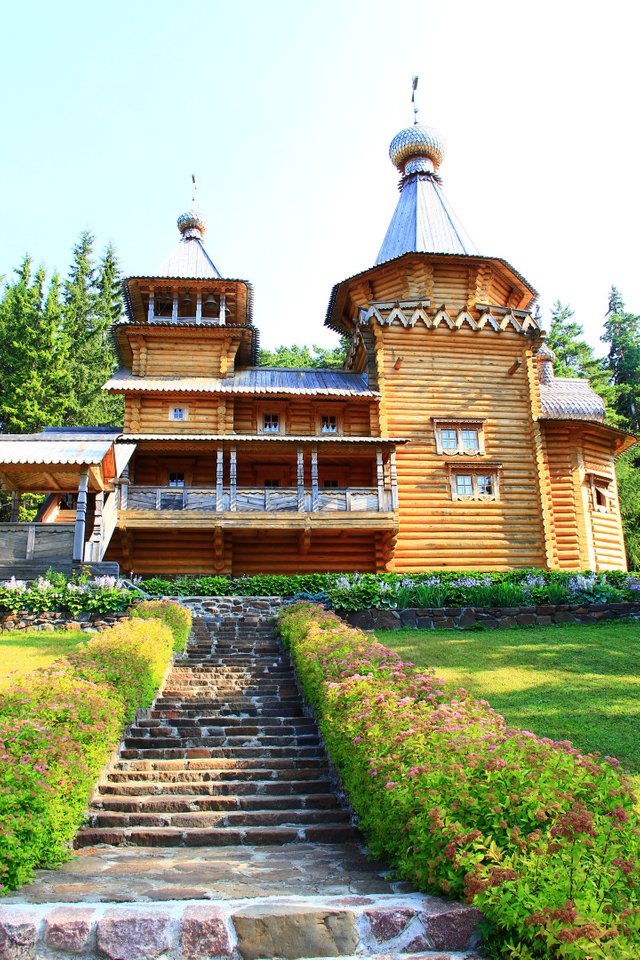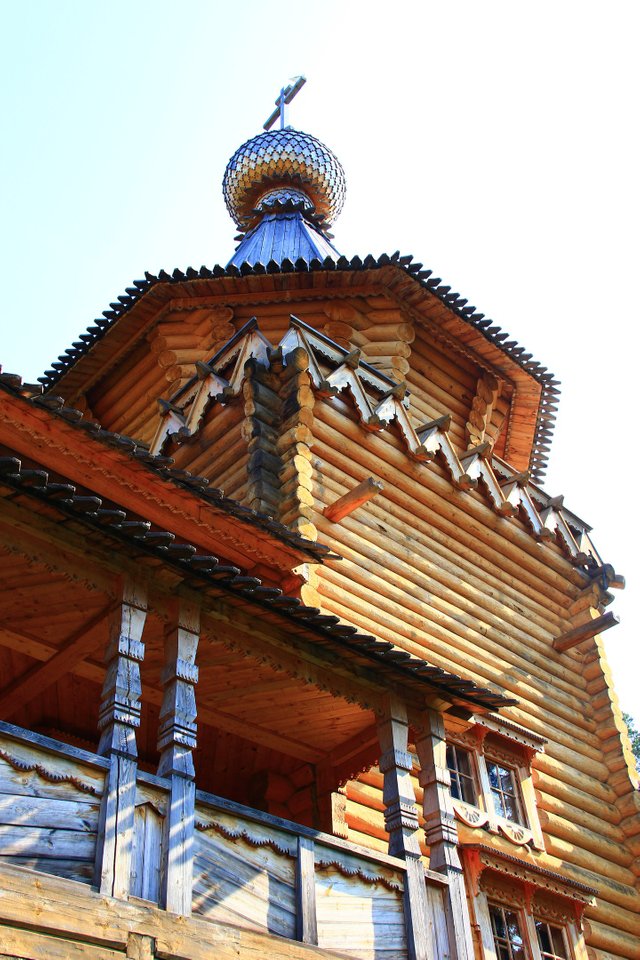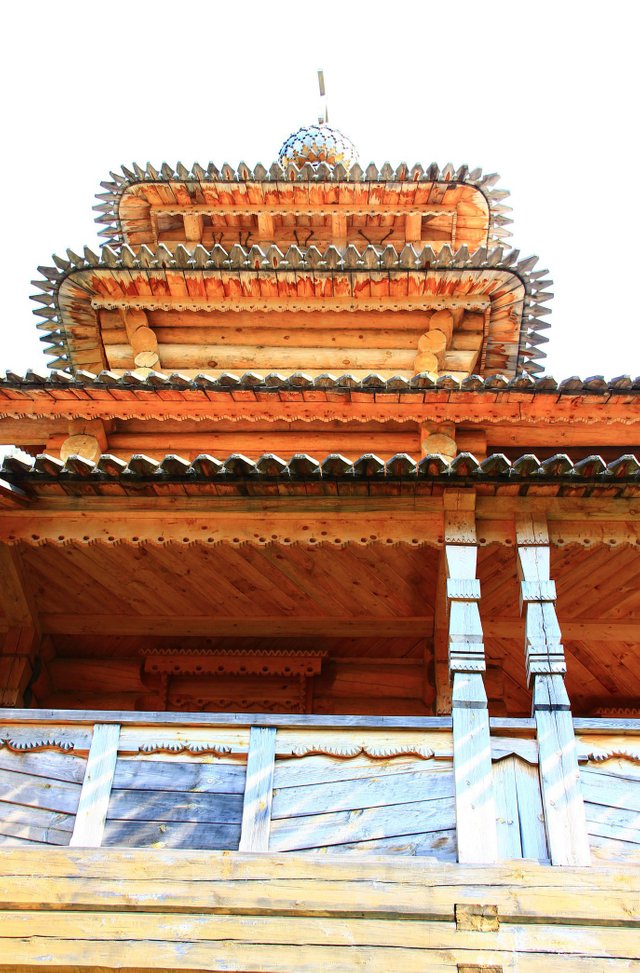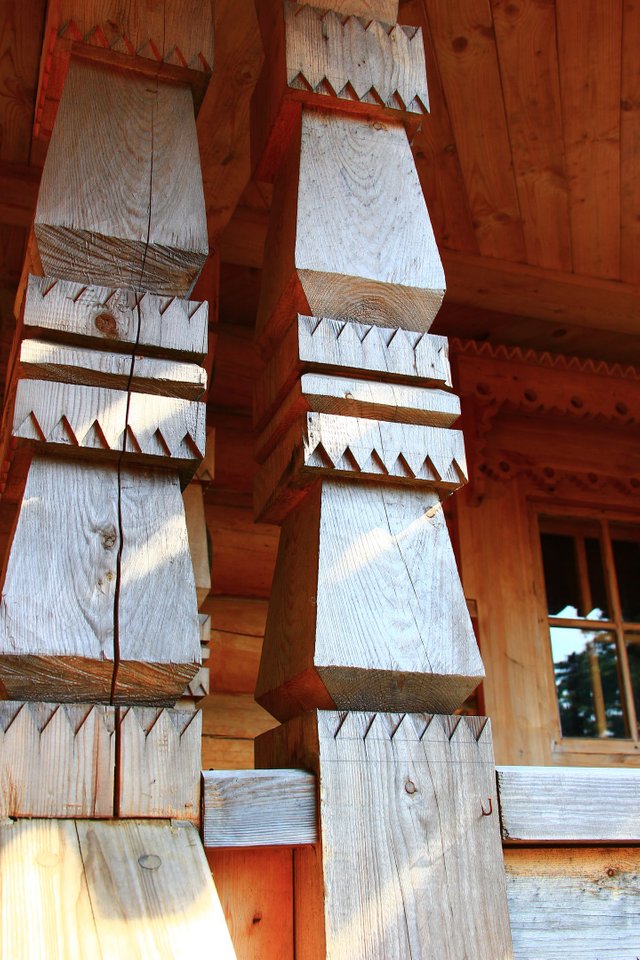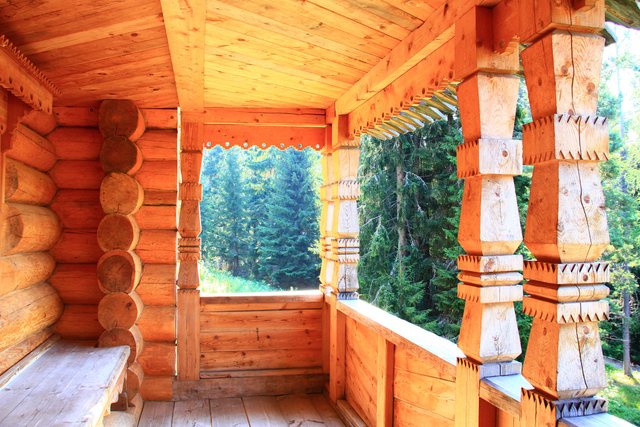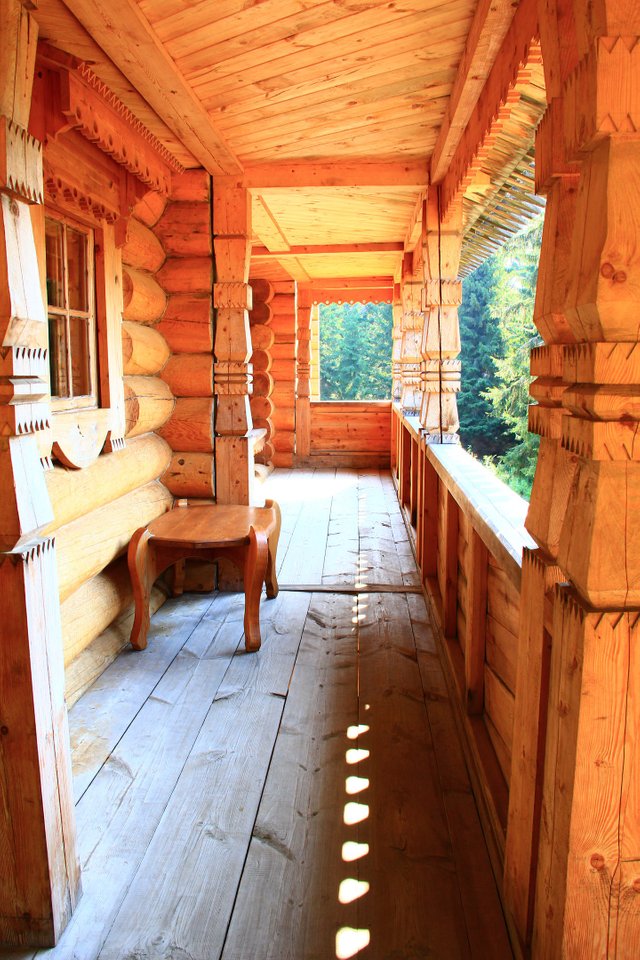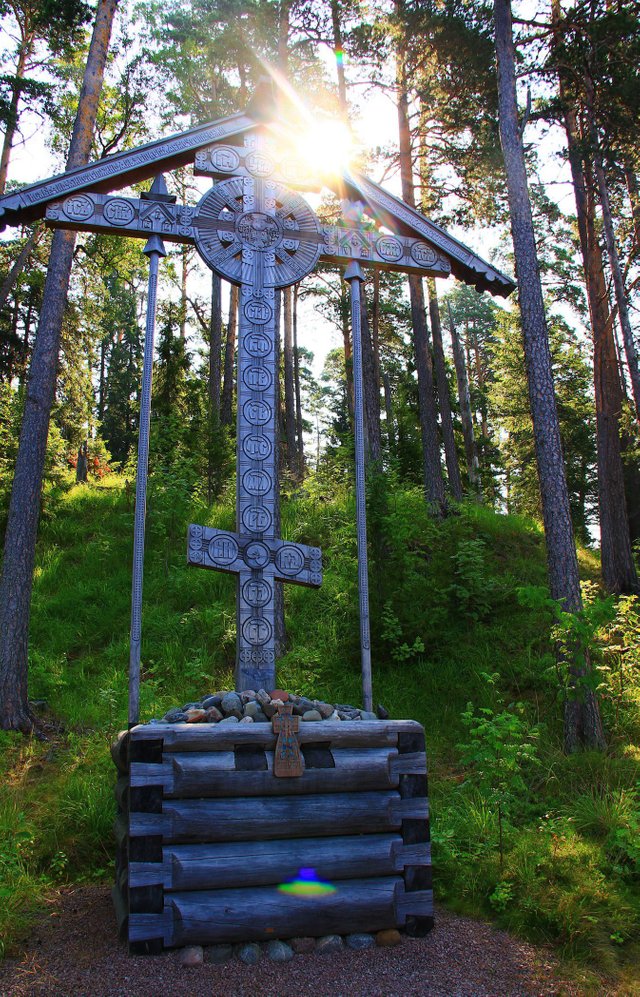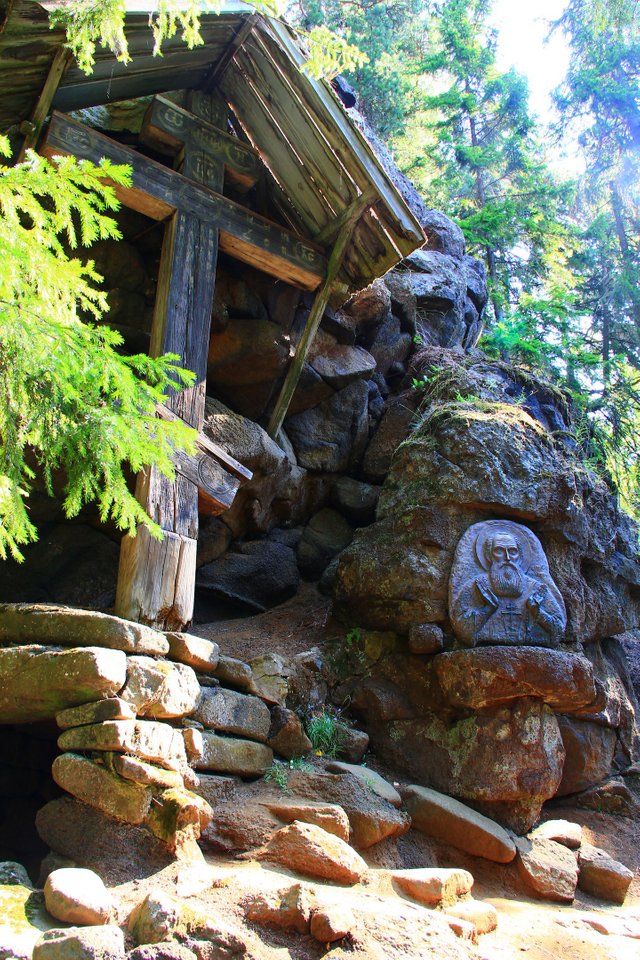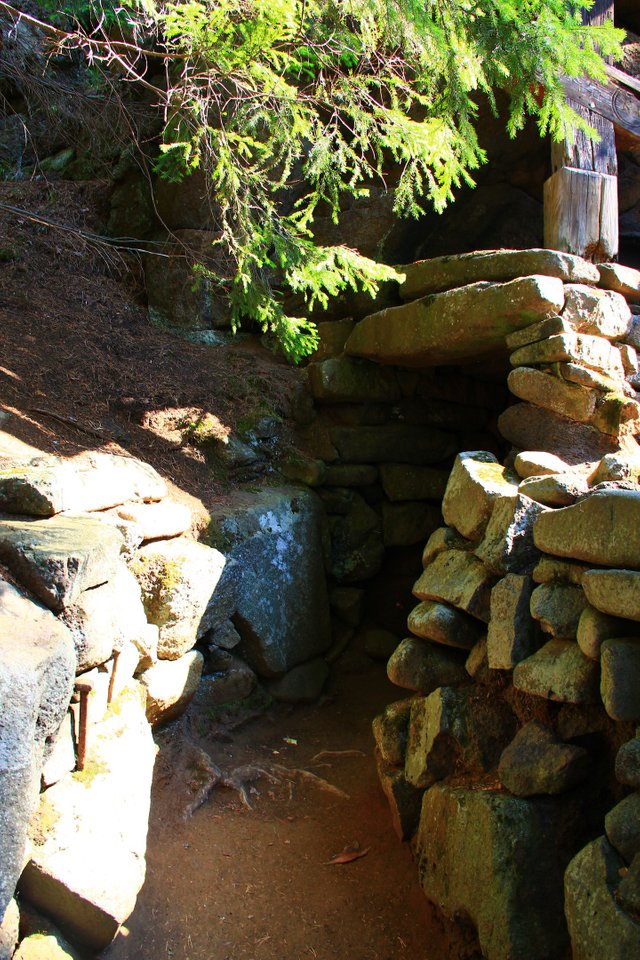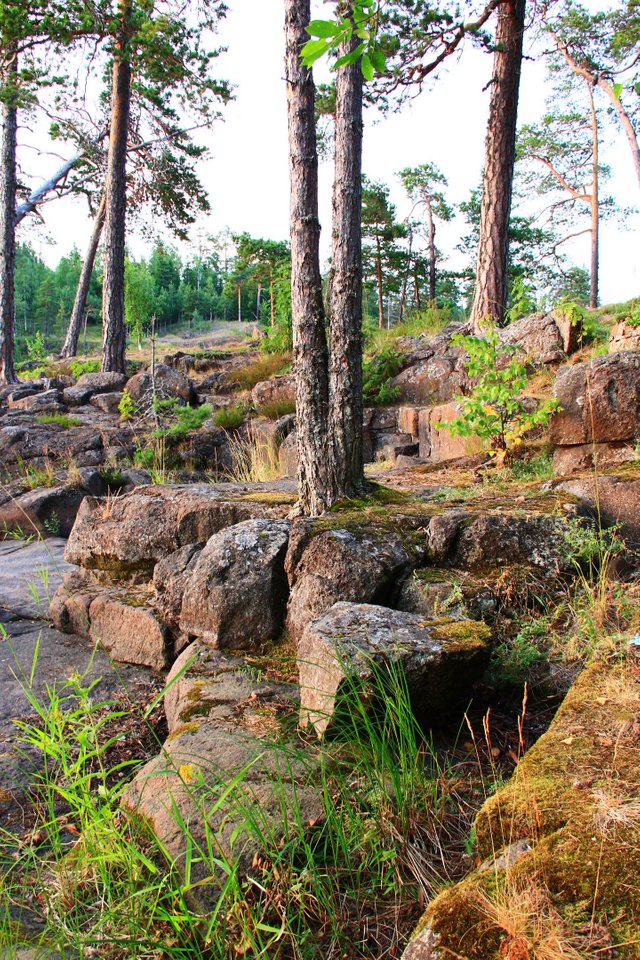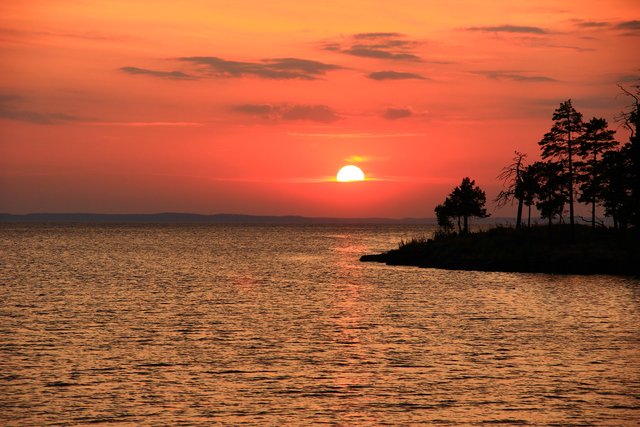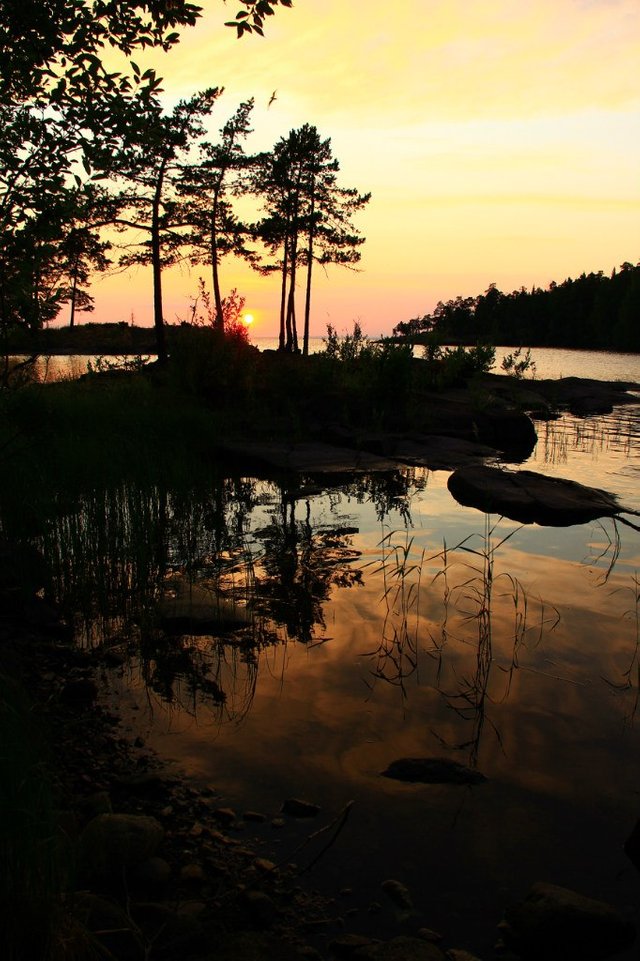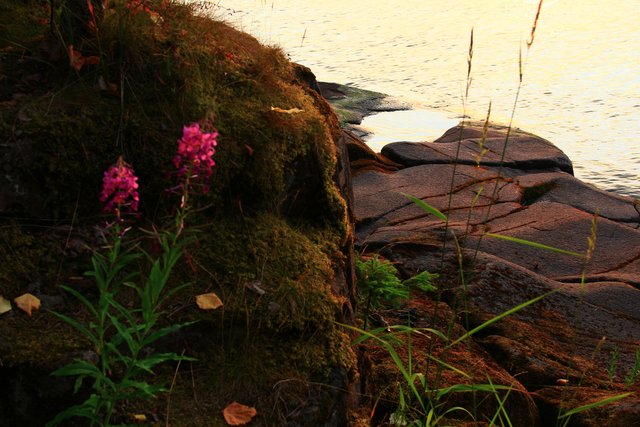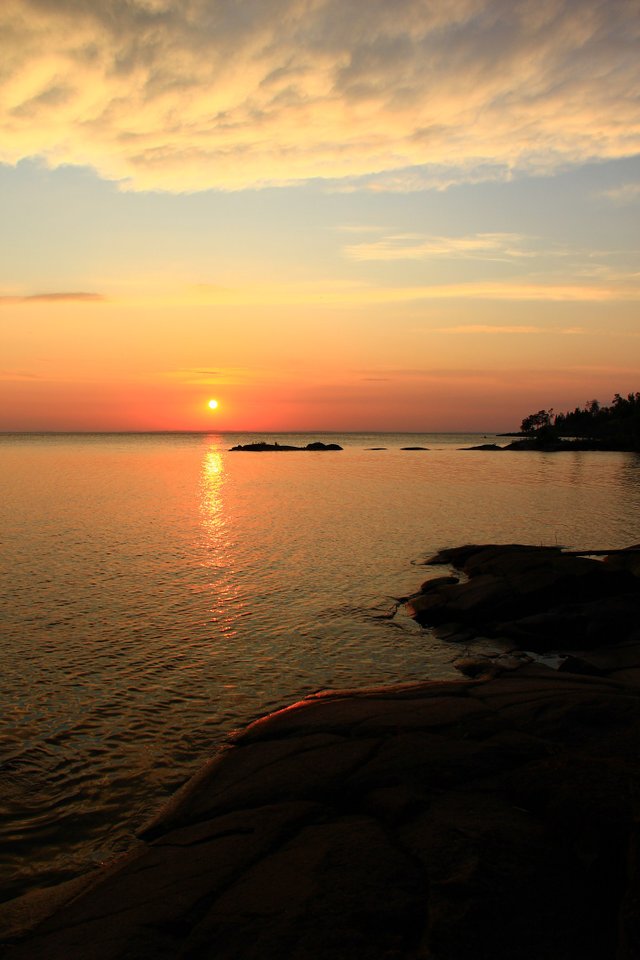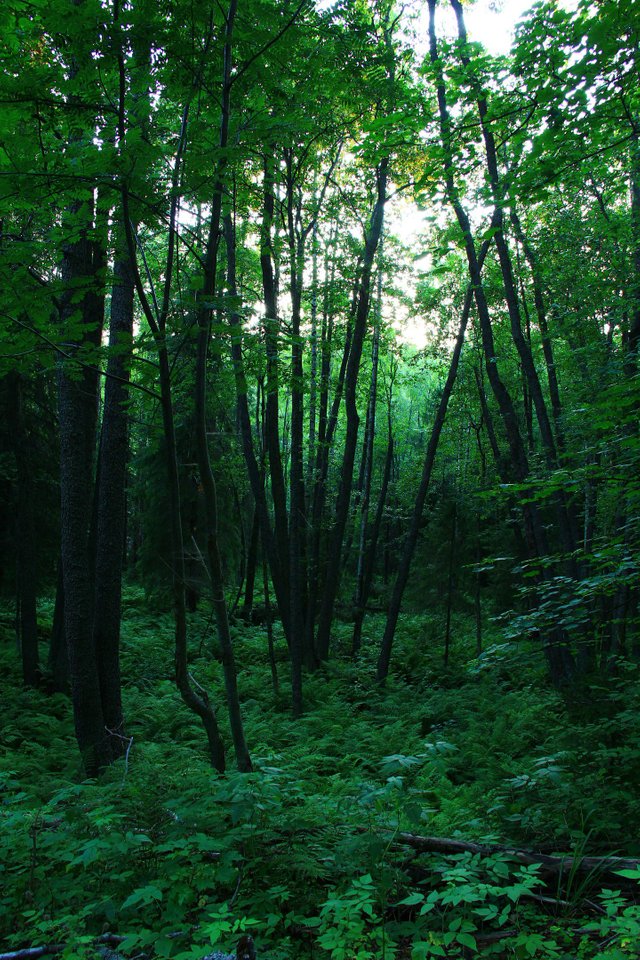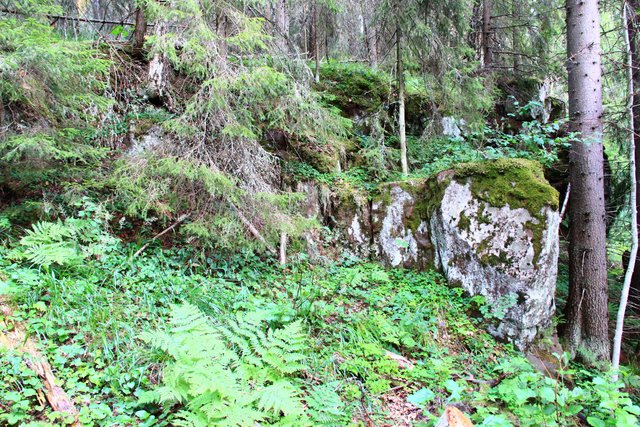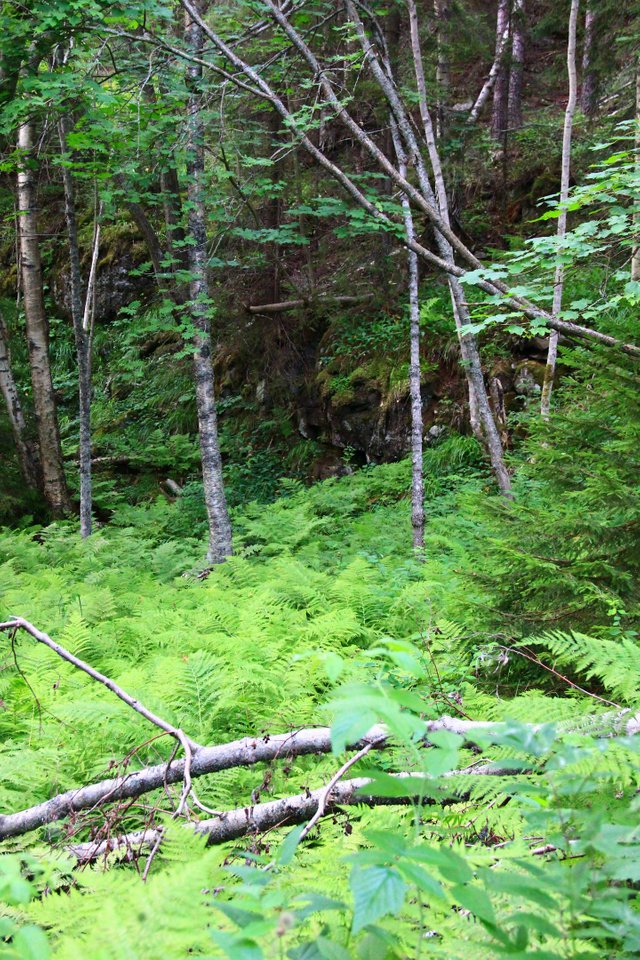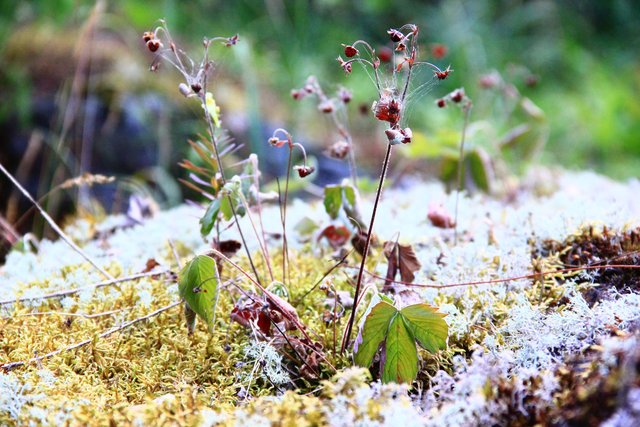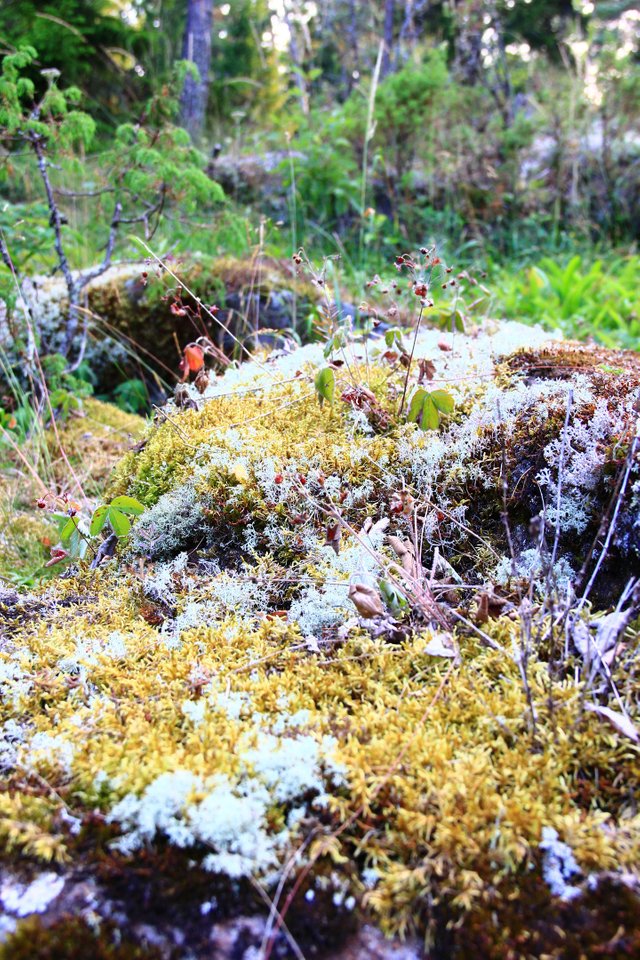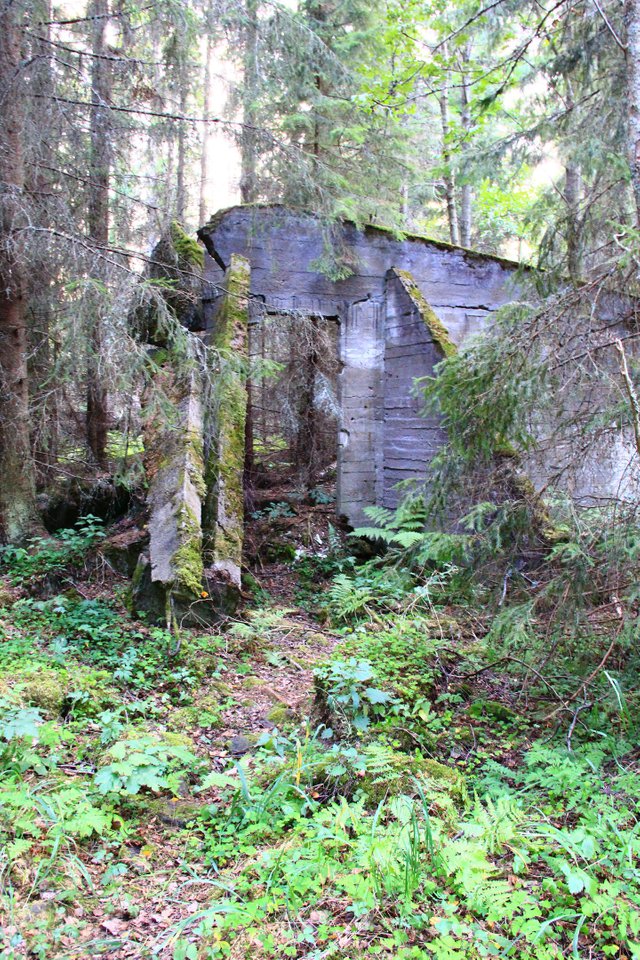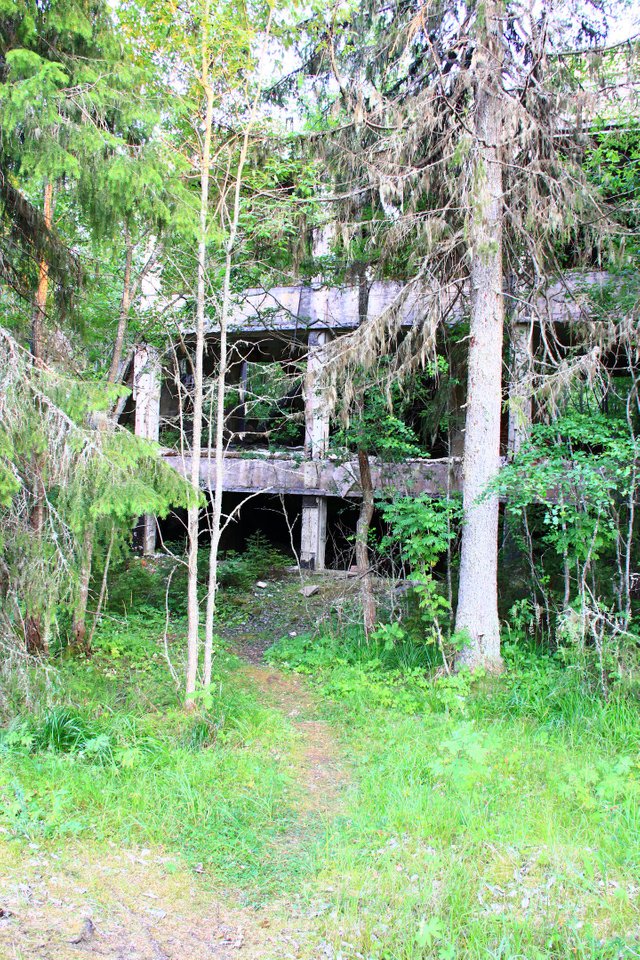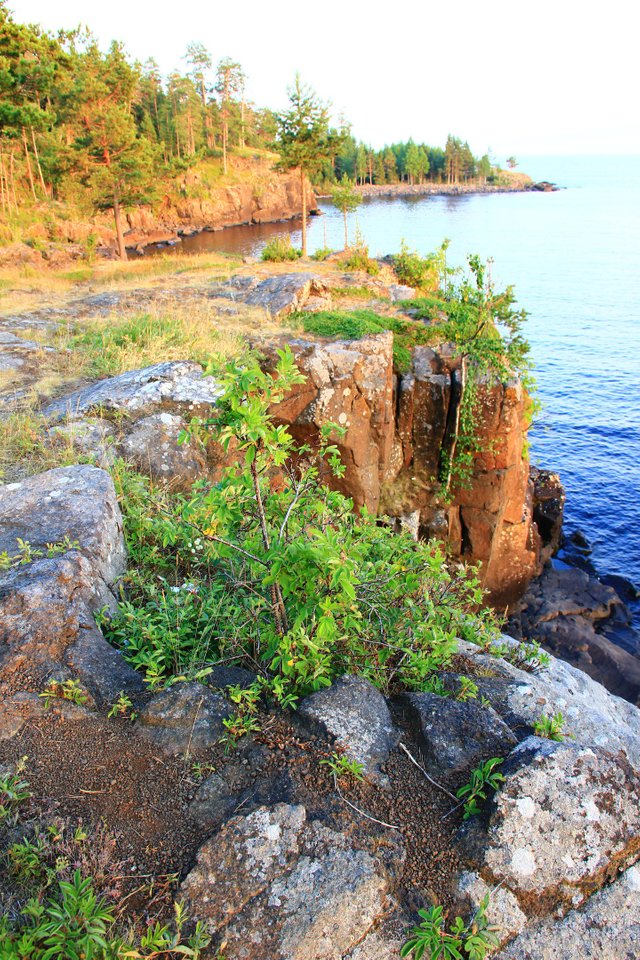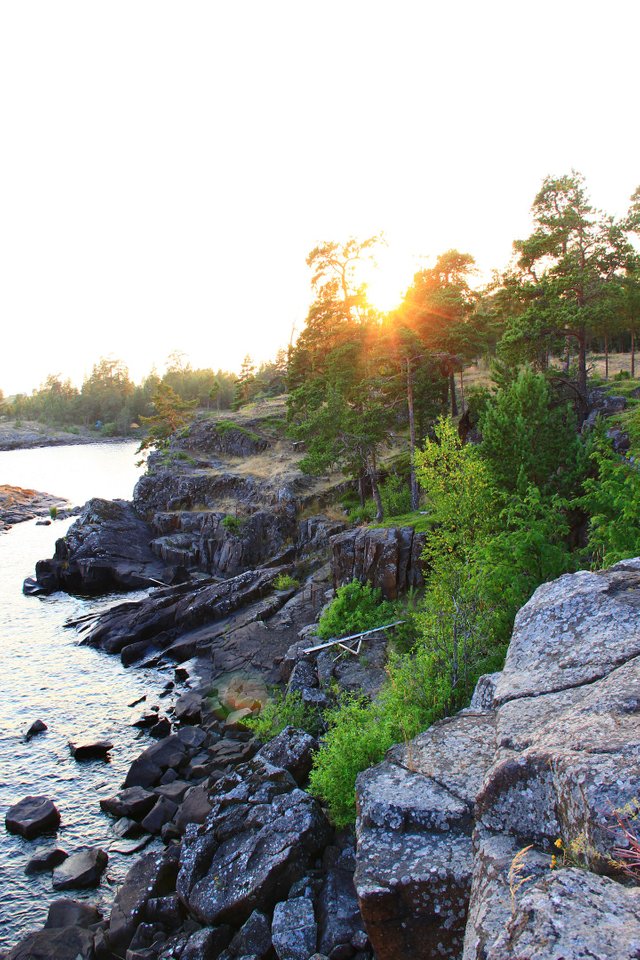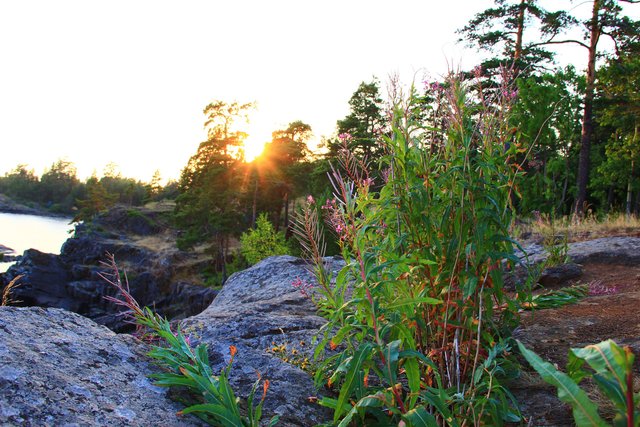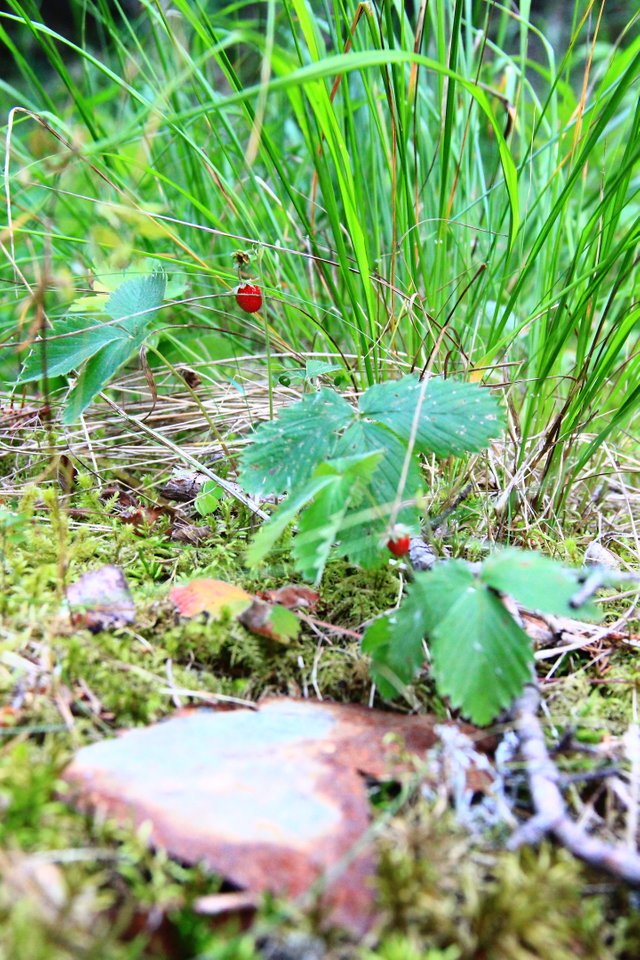Valaam. Pearl of the North.
For a short time I worked as a guide of the Valaam Monastery. The monastery is located in the north of the European part of Russia, on the archipelago in the Ladoga Lake. For several months I attended training courses, where we were told about the history of the monastery, read books dedicated to Valaam and I say that the place is really amazing!
Let's start with the story. As you know, Andrew the Apostle went to preach the Christian faith in the Russian lands and erected a cross there, some believe that the cross was erected on Valaam, thus predetermining the fate of this place. After 900 years, the monks Sergius and Herman founded a monastery here. Now the relics of Saint Sergius and Saint Herman in the Transfiguration Cathedral of the Valaam Monastery. As you understand, the monastery is ancient, during its existence the monastery on the island 2 times ceased to exist and 2 times revived.
In 1611, these lands moved to Catholic Swedes, some of the monks left Valaam, taking with them holy things, and the remaining monks at Valaam accepted death at the hands of the Swedes.
The second period of desolation occurred in the post-revolutionary period. Valaam was considered part of Finland. Finland was not an independent state, it was always a part of either Sweden or Russia. But in 1917, after the revolution, Vladimir Lenin made Finland an independent country. The country is a Lutheran and soon the brethren felt oppressed by the Finnish authorities. In addition, under the pressure of the Finnish authorities, the Finnish Orthodox Church switched to the Gregorian calendar. Many monks refused to accept this and went to other Orthodox monasteries. In February 1940, during the Soviet-Finnish war, Soviet aircraft made a bombing of the Valaam Monastery. The monks gathered shrines and went deep into Finland, but they could not return, because soon the Valaam archipelago became part of the USSR.On the territory of Finland, Valaam monks founded the New Valaam Monastery. It houses the miraculous icon of the Valaam Mother of God. In the Valaam Monastery now its list. In the USSR at this time the Valaam monastery was given to the school of the boatswain of the Navy.
During the Great Patriotic War, Valaam was occupied by the Fascist allies - the Finns. After the war, in 1949, a state farm was established on Valaam, and from 1952 to 1984 an house for invalids of war and the elderly functioned. A camp was formed. Valaam buildings were destroyed, many were deliberately destroyed. Valaam Chapels and temples made of wood were used to kindle, old icons and books were subjected to the same fate.
The revival of the monastery was at the end of the 80s. On the island, the monastic life began to fade and restoration work began. And in 1991 were found the relics of the ascetic of Valaam land - the Monk Antipas, they are kept in the Transfiguration Cathedral.
It is worth mentioning about other Valaam ascetics, I will not write much, I will list only a few: Hegumen Nazari (1735-1809), ranked as a saint. He did a lot to strengthen the spiritual life of the monastery and for its prosperity. Another famous hegumen is Hegumen Damaskin (1795-1881). With him, Valaam was famous throughout Russia, famous for its splendor and strict monastic life. Hegumen Damaskin is called the builder of Valaam. It was with him that the construction of the Savior's Transfiguration Cathedral began. The Illuminator of the Aleuts is rightfully considered to be the Reverend Herman of Alaska, who also worked on Valaam and from there went to America.
And now let's move on to architecture and nature.
On the photo Monastery Bay:
Previously, all ships arrived here, but now cruise ships approach the Great Nikon Bay, since the Monastery Bay will be shallow for them. But in this bay come boats, which bring pilgrims from the ships to the Central Manor, it is within reach of the Monastery Bay! In the Central Manor there is a pearl of Valaam - the Transfiguration Cathedral, as well as well as the rooms of monks, service buildings, an old cemetery. Unfortunately, I did not make pictures of the main sight of the monastery, so I'll have to show photo from Wikipedia:
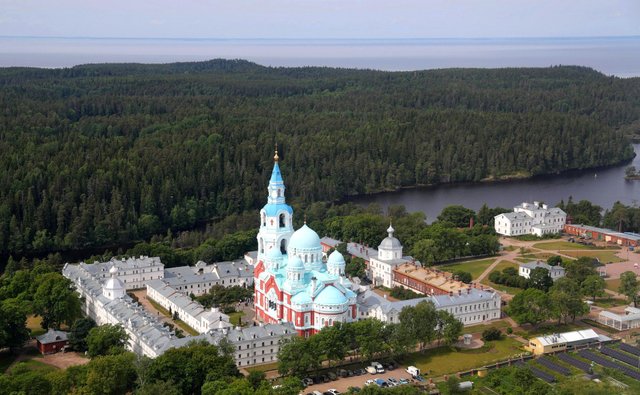
https://goo.gl/AVX7GF
all the other photos in the post are made by me personally.
On this photo the Resurrection Skete, the Church of the Resurrection of Christ:
This Skete is located near the Big Nikonovskaya bay, from it the road lies uphill, having risen, we fall into this Skete. That is, it is the first in the way of tourists and pilgrims.
A Skete is a kind of monastery in a monastery, only with a more strict charter. Monks who want more seclusion and a more ascetic way of life ask the hegumen for blessing to be removed to the hermitage.
The Skete now does not work and is given for the accommodation of guides.
On the photo the Resurrection Skete. Straight - descent from the mountain to the big Nikonovskaya bay. On the right and left in the foreground are former monastic rooms. In the building on the left, except for the guides, there is a church shop. On the right in both buildings are tour guides. On the left in the background is the Church of the Resurrection of Christ. The temple is very interesting! I'll tell about him under the photo.
It is divided into upper and lower. The lower church is a kind of The Church of the Holy Sepulchre (of course, not in this size). It is darker, it was there that the Paschal Service began, the part that follows until midnight. At midnight a procession emerged from the temple, which was already returning to the upper church - bright and festive. And there was a solemn part of the service. Now, it seems, this tradition is renewed.
In the next photo, the Resurrection Skete on the other side, that is, Ladoga was left behind and a view of the monastic cells. From the gate there is a path to the main monastic road, along this road you can come to the Central Manor, where the Transfiguration Cathedral is located.
In the 1960s, tourists began to come to Valaam, they lived in this monastery. In the former monastic rooms. In the upper church there was a cinema, and in the lower a laundry.
On the next photo the Vladimir Skete. This Skete is new.
The architect of this cathedral is Andrey Anisimov. I found his position very interesting. Before the revolution, the Russian church architecture was dominated by The Russian Revival style. After the revolution, the temples ceased to build, since the power in the country was atheistic. Today the construction of churches has resumed. And Andrei Anisimov believes that they should be built in the same style, where their construction ended. That is, The Russian Revival style should receive its logical continuation.
Whatever it was, but I really like this style!
This is how the cathedral looks inside:
This photo was taken from the Main Monastery Road, on it the Church of Alexander Nevsky in the Vladimir Skete:
This church reminds me very much of the church of the Smolensky Skete. Only the dome is black. There I was not, but I know the history of this Skete, it is very interesting! The temple in honor of the Smolensk Icon of the Mother of God (patroness of the soldiers) was built on the initiative and at the expense of Grand Duke Nikolai Nikolaevich. Construction began in 1914 and the temple was conceived in memory of the soldiers who died in the First World War.According to the grand duke's plan, 12 ascetic monks were supposed to live in the Skete, who would read the Psalms around the clock and make memorial services for all the soldiers. The architect was the brother of the Grand Duke - Peter Nikolaevich, and the builder was the monk Ephraim. There was a revolution and Nikolai Nikolayevich's plans did not come true, but Father Ephraim did not leave his ministry, from early morning he prayed daily about the deceased soldiers. Of course, the Soviet government did not spare the temple created by members of the imperial family. To this day it has not survived. Today rebuilt.
In this photo Nikolsky Skete, in my picture he is on Restoration:
I was fortunate enough to visit a couple of remote Skete that are on separate islands. One of these Skete is Ilinsky. In honor of the prophet Elijah. Now it is rebuilt anew, since it has not survived to this day, before the revolution the Skete was also wooden.
Another island Skete, this is the Skete of Alexander Svirsky. He is a great saint of the Russian Orthodox Church. This ascetic was rewarded during his lifetime with the visit of the Mother of God and the appearance of the Trinity. His monastic journey started on Valaam, he retired on this island and led an extremely ascetic life. He lived in this cave:
We went there, she's just a tiny one!
The nature of Valaam is also unique. In summer, there are more sunny days on Valaam than in the district. This is due to the fact that the island consists of a rock - gabrodiobas. In warmer days gabrodiabas heats up and then gives heat to the atmosphere. Thus, a warm stream of air repels the clouds. In addition, there are several places for ringed seals on Valaam.
Sunsets on Valaam are simply magnificent!
Forest part of the island:
Traces of the presence of the Finnish military during World War II:
Another beautiful part of the island:
Speaking of Valaam, it is impossible to avoid the topic of disabled people's home, which is located in a deserted monastery after the Second World War. Some people have been mutilated by the war so much that they could not physically let relatives know about themselves.Some people came to Valaam, hoping in the house of disabled people to find out their relatives who had not returned from the war. To care for the disabled on the island, the staff appeared, a village of Valaam was formed.
One day, I decided to go to the Valamas cemetery. There, I saw a grave, the inscription on which I was struck by: "Voloshin Grigory Andreevich." 1910-1974 As a result of the wound, Grigory lost his arms and legs, lost his speech and hearing, and left the war to him only to see.The son found his father hero in 50 years . ". I think that this alone is enough to tell about the home of disabled people.
It is a stunning monastery with a difficult fate. A stone island in a cold and troubled lake, but an island with such exceptional nature and architecture.
Русская версия: https://golos.io/psk/@brandyblondie/zhemchuzhina-ladogi-valaam
